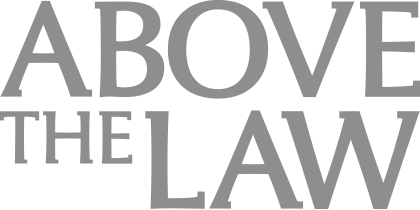Emoluments Are Back On The Table
Second Circuit reinstates emoluments lawsuit against Trump.

Trump International Hotel and Tower – Chicago (Photo by David Lat)
The procedural maneuverings are confusing, but there is once again a live case on President Donald Trump’s possible violations of the Emoluments Clause.
On Friday, the Second Circuit Court of Appeals reinstated a case against Trump, overturning a lower court ruling kicking the case.

Generative AI at Work: Boosting e-Discovery Efficiency for Corporate Legal Teams
In December 2017, a district court found that two groups suing the president’s business — Citizens for Responsibility and Ethics in Washington, and a group of restaurant owners — didn’t have standing to pursue claims that the president is violating the Constitution by accepting foreign dollars through his various businesses. The Second Circuit disagreed, and found standing for the hospitality businesses. The Second Circuit found that the plaintiffs meet all three prongs of the standing test: they allege an injury, they allege causation, and they allege redressability.
The finding of redress is where the Second Circuit differs sharply from the Fourth Circuit. Earlier this year, the Fourth Circuit kicked an emoluments case, based on its finding that, even if proven, there is no legal redress for the problem. The Fourth Circuit determined that, so long as Trump emblazons his name on all his properties, there’s no way to stop foreign governments from knowing that those are the places you should go to pay him off.
The Second Circuit disagreed. And when I say “disagreed,” I mean the Second Circuit explicitly called out the Fourth Circuit in its opinion. Which, as appellate decisions go, is fire:
As a preliminary note, both opinions seem to be influenced by their perception that these lawsuits are politically motivated. Judge Walker asserts that this case is “deeply political” and emphasizes that “President Trump was democratically elected by the American people . . . with his business holdings and brand prominence in full view.“ See infra. The Fourth Circuit expressed skepticism as to “why [the plaintiffs] came to the court for relief in the first place,” implying that their motivation was political and that this cast doubt on the federal court’s jurisdiction. In re Trump, 928 F.3d at 377; see also infra (quoting In re Trump). While it is certainly possible that these lawsuits are fueled in part by political motivations, we do not understand the significance of that fact. It is true that a political motivation for a lawsuit, standing alone, is insufficient to confer Article III standing. Cf. Flast v. Cohen, 392 U.S. 83, 106 (1968) (noting that the “federal court[s] [cannot be used] as a forum in which to air [] generalized grievances about the conduct of government”). But while the existence of a political motivation for a lawsuit does not supply standing, nor does it defeat standing. “Standing under Article III . . . [depends on] an injury [that is] concrete, particularized, and actual or imminent; fairly traceable to the challenged action; and redressable by a favorable ruling.” Monsanto Co. v. Geertson Seed Farms, 561 U.S. 139, 149 (2010) (citing Horne v. Flores, 557 U.S. 433, 445 (2009)). Whether a lawsuit has political motivations is irrelevant to these determinative issues.
Sponsored

Curbing Client And Talent Loss With Productivity Tech

AI Presents Both Opportunities And Risks For Lawyers. Are You Prepared?

Law Firm Business Development Is More Than Relationship Building

Law Firm Business Development Is More Than Relationship Building
The Second Circuit’s opinion then goes into a point-by-point take down of the Fourth Circuit opinion. (Read it here.)
So… we have a bit of a “circuit split.” One imagines Trump will appeal this ruling to the Supreme Court, and one imagines the Supreme Court will grant cert because this is a core reason for having a Supreme Court in the first place.
One further imagines that the conservatives on the Supreme Court will do everything they can to protect Trump, especially Chief Justice John Roberts, who would probably like to avoid the whole issue by kicking these plaintiffs on standing. And that’s only if Trump wins re-election. If he loses, Roberts will kick the case on mootness, which might be his actual favorite thing to do in the world.
We are unlikely to ever reach the merits on this case. Which is really too bad. We need an answer to this question. The politics of Trump’s corruption aside, we have an entire Constitutional provision, one that is explicitly supposed to protect our democracy from corruption in the executive branch, and NOBODY seems to know exactly what it means, how it functions, or what the solution is for a president who violates it. It’s kind of important to know what the Emoluments Clause actually does, given the global interconnectedness of the modern world and the likelihood that future presidents will also have global holdings.
Only the Supreme Court can tell us what the Emoluments Clause means, for good or ill. It’d be nice to have an answer. Instead, we’ll play these procedural games until Trump is defeated or leaves office.
Sponsored

Generative AI at Work: Boosting e-Discovery Efficiency for Corporate Legal Teams

U.S. Appeals Court Reinstates Emoluments Case Against Trump [New York Times]
Elie Mystal is the Executive Editor of Above the Law and a contributor at The Nation. He can be reached @ElieNYC on Twitter, or at [email protected]. He will resist.







